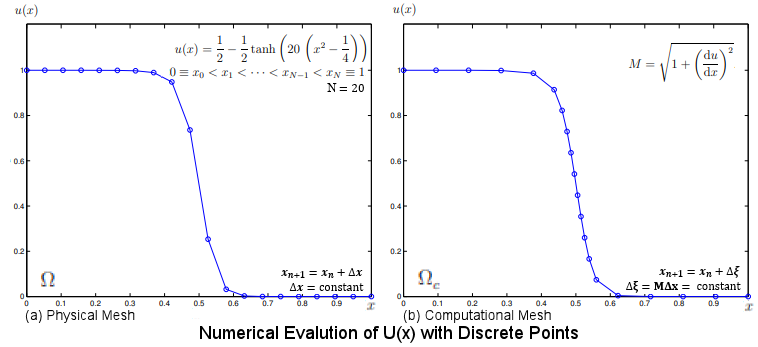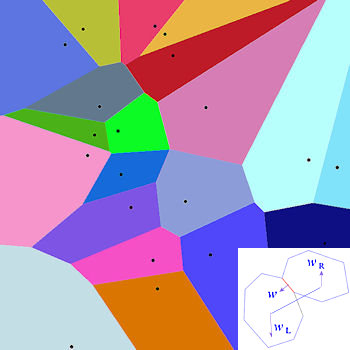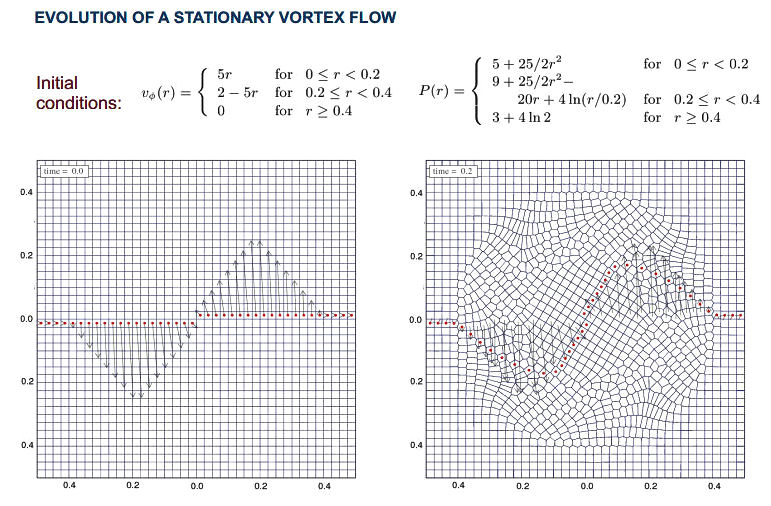In numerical evaluation of functions and differential equations the independent variables are digitalized by adding infinitesimal steps one after another in constant amount as shown in Figure 03-05b. The most convenient choice is to divide the range into N partitions, i.e.,
 x = (xN - x0)/N (Figure 03-05b,a). However, there are cases when other choice such as equi-distribution of some attribute is more suitable. Such choice would alter the size and boundary of the physical meshes
x = (xN - x0)/N (Figure 03-05b,a). However, there are cases when other choice such as equi-distribution of some attribute is more suitable. Such choice would alter the size and boundary of the physical meshes  x, and
x, and  y as shown in Figure 03-05a for 2-D case.
y as shown in Figure 03-05a for 2-D case.
 |
 |
It is thus called the method of moving mesh. For example, the step can be chosen as constant arc-length M x (see Figure 03-05b,b). The arc M is called the monitor function transforming the physical mesh x (see Figure 03-05b,b). The arc M is called the monitor function transforming the physical mesh  x to the computational mesh x to the computational mesh   . The new choice derives more points in the range with steeper descent, and thus improves the numerical approximation. . The new choice derives more points in the range with steeper descent, and thus improves the numerical approximation.
|
Figure 03-05a Moving Mesh, Concept |
Figure 03-05b Moving Mesh, Example [view large image] |
For the case of horizontal straight line u = constant, du/dx = 0 giving M = 1 and   = =  x. x. |



 (r) and pressure P(r), Figure 03-05d portrays the evolution of the meshes for v
(r) and pressure P(r), Figure 03-05d portrays the evolution of the meshes for v

 m = 0.2726,
m = 0.2726, = 0.7274,
= 0.7274, s = 0.809,
s = 0.809,